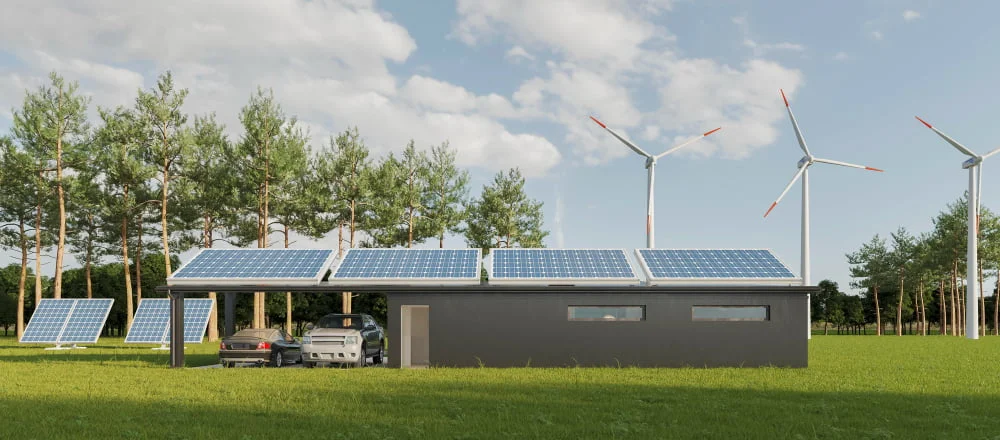Introduction:
As the global demand for energy continues to surge, the role of energy storage emerges as a linchpin in the pursuit of a reliable, sustainable, and resilient power grid. This blog post delves into the transformative landscape of energy storage, exploring its diverse technologies and applications and the pivotal role it plays in the transition to a more dynamic and decentralized energy future.
I. Understanding the Need for Energy Storage:
1. The Challenge of Intermittency: Renewable energy sources, while abundant and clean, pose challenges due to their intermittent nature. Energy storage addresses this intermittency by capturing excess energy during periods of high production for use when demand exceeds supply.
2. Grid Stability and Reliability: Energy storage systems contribute to grid stability by balancing supply and demand, mitigating voltage fluctuations, and providing a reliable power source during grid outages or peak demand periods.
II. Key Technologies Driving Energy Storage:
1. Batteries: Battery technologies, from traditional lithium-ion to emerging technologies like solid-state batteries, play a significant role in energy storage. These systems are versatile, scalable, and find applications ranging from electric vehicles to grid-scale storage.
2. Pumped Hydro Storage: Pumped hydro storage remains one of the oldest and most established forms of grid-level energy storage. By utilizing the gravitational potential energy of water, this technology offers large-scale storage capacity and rapid response times.
III. Grid-Scale Storage Solutions:
1. Utility-Scale Batteries: Large-scale battery installations are becoming increasingly common in utility-scale projects. These systems support grid stability, enhance renewable energy integration, and provide backup power during peak demand or emergencies.
2. Compressed Air Energy Storage (CAES): CAES systems store energy by compressing air into underground caverns during periods of low demand. When energy is needed, the compressed air is expanded to drive turbines and generate electricity.
IV. Distributed Energy Storage:
1. Residential Battery Systems: Homeowners are adopting residential battery systems to store excess solar energy for later use. These systems enhance energy independence, reduce reliance on the grid, and provide backup power during outages.
2. Vehicle-to-Grid (V2G) Technology: Electric vehicles equipped with bidirectional charging capabilities enable vehicle-to-grid technology. When parked, these vehicles can feed stored energy back into the grid, acting as mobile energy storage units.
V. Overcoming Storage Challenges:
1. Energy Density and Cost Considerations: Improving the energy density of storage systems and reducing costs are ongoing challenges. Technological advancements, economies of scale, and targeted research are driving improvements in these areas.
2. Materials and Environmental Impact: Sustainable and environmentally friendly materials are crucial in the design and production of energy storage systems. Recycling initiatives and the development of eco-friendly battery chemicals contribute to minimizing environmental impact.
VI. Applications Beyond Electricity Storage:
1. Thermal Energy Storage: Thermal energy storage systems store and release heat for various applications, including industrial processes, space heating, and cooling. These systems contribute to energy efficiency and load management.
2. Power-to-Gas Technology: Power-to-gas technology converts excess electricity into hydrogen or synthetic natural gas, which can be stored and utilized in various sectors, including transportation and industrial processes.
VII. The Role of Energy Storage in Decentralized Energy Systems:
1. Microgrids and Resilience: Energy storage is a linchpin in the development of microgrids, providing localized and resilient power solutions. Microgrids with storage capabilities enhance energy security and contribute to community resilience.
2. Peer-to-Peer Energy Trading: Energy storage facilitates peer-to-peer energy trading in decentralized energy systems. Prosumers can store excess energy and sell it directly to other consumers, creating more dynamic and efficient energy markets.
VIII. The Future Trajectory:
1. Technological Advancements: Ongoing research and development are driving continuous advancements in energy storage technologies. Innovations in materials, design, and manufacturing processes hold the key to more efficient and cost-effective solutions.
2. Integration with Smart Grids: Energy storage’s seamless integration with smart grids enables real-time monitoring, intelligent control, and optimized energy distribution. This synergy enhances overall grid efficiency and responsiveness.
Conclusion:
In the quest for a sustainable and resilient energy future, energy storage emerges as a linchpin that bridges the gap between intermittent renewable sources and the demands of a dynamic power grid. The journey through the diverse landscape of energy storage invites us to envision a future where clean, reliable, and decentralized energy is not just a possibility but a reality. Embrace the innovations, advocate for sustainable practices, and participate in shaping a future where energy storage empowers not only the grid but also the aspirations of a global community committed to a resilient and sustainable tomorrow.




